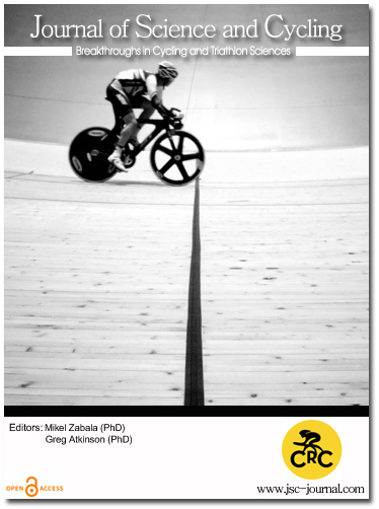A performance passport in cycling: facts and fancy
Abstract
Introduction
The Athlete Biological Passport (ABP) is a testing paradigm with immense potential value in the current climate of rapid advancements in biomarker discovery (Sottas, Robinson, Rabin, & Saugy, 2011; Vernec, 2014). Athletes who misuse doping substances do so to trigger physiological changes that provide performance enhancements. Therefore, in the same way that disease-related biomarkers are invaluable tools that assist physicians in the diagnosis of pathology, doping can be detected from specifically selected biomarkers (Sottas & Vernec, 2012). However, despite remarkable results since its implementation, athletes are may fine-tuning their doping methods to circumvent the ABP testing protocols. Hamilton & Coyle, (2012) document that athletes adapted their doping protocols to reduce the chances of being tested positive.
The ABP was first adopted in cycling by the International Cycling Union (UCI) to provide an extended overview of the variations in hematological parameters of professional cyclists. As few modifications of the ABP have occurred since its introduction in 2009, additional parameters are needed to strengthen its detection and deterrence potential. The new World Anti-Doping Agency code (WADA, 2015) stresses the importance of the ABP and the need to further develop it to address confounding factors. Indeed, Vernec, (2014) notes that the ABP is not limited to the longitudinal analysis of multiparametric biomarkers present in biological samples but should also include other relevant information such as the athletes’ whereabouts and other parameters, such as performance.
Meanwhile, athletes appear compelled to include some forms of altitude training in their preparation apparently in expectation of performance gains compared to training at sea-level. However, altitude exposure may also be a pretext for the justification of suspicious profiles as the validity of the ABP. Refining the passport by introducing new and more robust variables (e.g., new biomarkers and performance alteration) and investigating the altering effect of confounding factors (e.g. altitude exposure) would yield a reinforced targeted approach of athletes’ longitudinal (biological or physiological) passport. For instance, the development of an athlete’s performance (or physiological) passport (APP) may pave the way for the ABP to be strengthened, potentially increasing its sensitivity for identifying athletes with profiles indicative of doping.
While cycling performance ability can be evaluated and modelled scientifically (Hopker, Coleman, & Passfield, 2009; Hopker, Coleman, Passfield, & Wiles, 2010; Pinot & Grappe, 2015), the reliability and validity of cycling power meters used in professional cycling first needs to be evaluated. When calibrated and accurate data is obtained, a longitudinal power data profile for a cyclist, in the form of an APP may provide a useful signature of likely changes in training and performance potential. However, accounting for confounding factors that affect performance and integrating this into the ABP represents an additional concomitant challenge.
This presentation will introduce the elements susceptible for improve with the current APB. First, stratagems adopted by athletes to circumvent being flagged in the ABP will be described. Second, the effect of confounding factors on biological and performance variables will be highlighted. Finally, a pragmatic strategy to strengthen the ABP through a “physiological module” including performance factors will be presented.
Downloads
Published
How to Cite
Issue
Section
Copyright (c) 2018 Journal of Science and Cycling

This work is licensed under a Creative Commons Attribution-NonCommercial 4.0 International License.
Authors contributing to Journal of Science and Cycling agree to publish their articles under a Creative Commons CC BY-NC-ND license, allowing third parties to copy and redistribute the material in any medium or format, and to remix, transform, and build upon the material, for any purpose, even commercially, under the condition that appropriate credit is given, that a link to the license is provided, and that you indicate if changes were made. You may do so in any reasonable manner, but not in any way that suggests the licensor endorses you or your use.
Authors retain copyright of their work, with first publication rights granted to Cycling Research Center.






